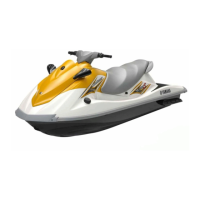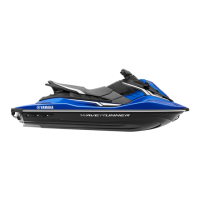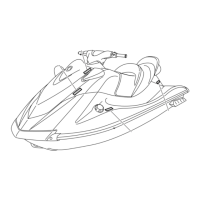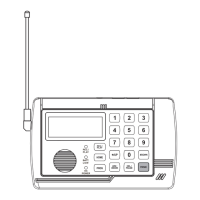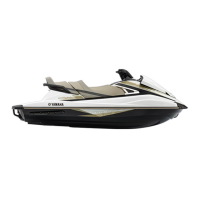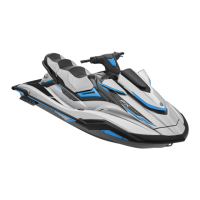
Do you have a question about the Yamaha WaveRunner VX Cruiser HO 2020 and is the answer not in the manual?
| Category | Personal Watercraft |
|---|---|
| Manufacturer | Yamaha |
| Model | WaveRunner VX Cruiser HO |
| Year | 2020 |
| Engine Type | 4-stroke |
| Horsepower | 180 hp |
| Impeller | 3-blade, stainless steel |
| Displacement | 1812cc |
| Fuel Type | Unleaded gasoline |
| Fuel Capacity | 18.5 gallons |
| Length | 132.7 in |
| Height | 45.3 inches |
| Seating Capacity | 3 |
| Rider Capacity | 3 persons |
| Pump Type | 155mm |
| Width | 48.4 in (123 cm) |
Declares watercraft conformity with EU Directive 2013/53/EU.
Details about the watercraft and engine specifications and components.
Outlines mandatory standards and requirements for the watercraft.
Explains where to find and record PRI-ID, CIN, and engine serial numbers.
Details on manufactured date, model, and builder's plate information.
Covers limitations, safe cruising, and required equipment for safe operation.
Details hazards, watercraft characteristics, and safe handling procedures.
Guidelines for wakeboarding, safe boating rules, and responsible use.
Defines key terms and operational concepts related to the watercraft.
Identifies and illustrates the location of exterior, rear, handlebar, and engine compartment components.
Covers the use of the remote transmitter for security and mode settings.
Explains the operation of start/stop switches, RiDE lever, throttle, and steering.
Details cooling water outlet, water separator, and dashboard controls.
Explains forward, neutral, and reverse gear operation.
Details Low RPM, No-Wake, and Cruise Assist modes.
Explains the multifunction display, initial operation, and speedometer functions.
Details shift indicator, fuel/oil warnings, engine status, hour meter, and voltmeter.
Instructions for seat removal, installation, handgrip, and reboarding step.
Covers bow/stern eyes, cleats, storage compartments, glove box, and fire extinguisher.
Covers fuel requirements, filling, and engine oil specifications/checks.
Instructions for draining bilge water and transporting the watercraft on a trailer.
Details the essential steps for breaking in the new engine for optimal performance.
Comprehensive list of checks before launching, including compartment and fuel system checks.
Details checks for fluids, battery, steering, levers, switches, and cords.
Verifies storage, safety equipment, hull, intake, drains, and post-launch systems.
Covers familiarization, riding positions, launching, starting, stopping, and leaving the watercraft.
Explains turning, steering, stopping, and operating in reverse/neutral.
Covers boarding, passenger handling, capsizing, beaching/docking, and weeded areas.
Instructions for discharging water from cooling passages after use.
Covers cleaning the watercraft, engine, and flushing cooling passages.
Details battery care, handling, storage, and installation procedures.
Outlines procedures for long-term storage, lubrication, and rustproofing.
Covers engine cover removal and the periodic maintenance chart.
Details engine oil changes and periodic checks for various components.
Lists key dimensions, weight, performance, and engine details.
Details fuel type, oil requirements, and battery specifications.
Introduces the chart for diagnosing and resolving common issues.
Provides steps to remove weeds or debris from the jet intake and impeller.
Emergency procedures for raising the reverse gate and jump-starting the battery.
Instructions for identifying and replacing blown fuses.
Guidance on towing the watercraft and procedures for submerged units.

